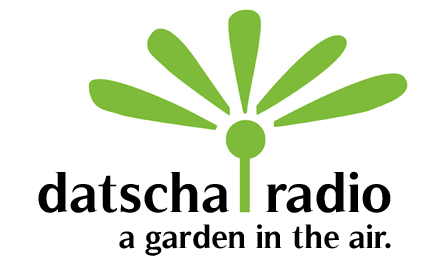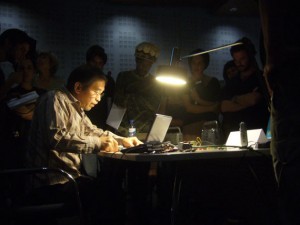Der neue deutsche Stil in der Gartenkultur war unlängst im Gespräch. Neben Präriegärten, die eine Gartenkultur der Wüste im mitteleuropäischen Klima wiederherzustellen versuchen, liegt der Zen-Steingarten sehr im Trend. Das Konzept von Standort und Platz in der Japanischen Kultur wurde vom Heidegger Schüler Kitaro Nishida durchdacht. Ich hatte Tetsuo Kogawa gebeten, seine Wirkung auf Mini-Fm Rundfunkprojekte wie Datscharadio zu erläutern, welche in einem ostdeutschen Garten stattfindet, der zu einen künstlerbetriebenen Garten wurde.
In unserer Emailkonversation vom 19.08.2008 schrieb Tetsuo Kogawa:
Nishida umdenken: Jeder Text hat Möglichkeiten ihn weiterzudenken, seinen Ursprung zu überdenken, und sogar misszuverstehen. Wie du weisst, ist Nishida’s ‘Basho’ ein Zentralbegriff seiner Metaphysik. Er versuchte, seine Metaphysik mit Ideen des Zen und des japanischen Buddhismus’ zu verbinden (besonders denen von Taisetsu Suzuki– — er ist viel interessanter als Nishida und beeinflusste auch John Cage). Aber ich muss sagen, dass, so lange man bei der Lektüre von Nishida’s japanischen Texten bleibt, sind diese sehr hermetisch-esoterisch geschrieben. Das ist ganz im Unterschied zu Heidegger. Wie Erasmus Schoefer (“Die Sprache Heidegger’s”) geistvoll dargestellt hat, ist Heideggers Sprache ‘logisch’ (nach Husserl’s Begrifflichkeit sollte sie in der “transzendenten Logik” nicht “formalen Logik” verstanden werden). Nishida ist keinenfalls so. Seine Texte sind prätentiös. Ausserdem gibt es das Problem der japanischen Sprache. Sie ist völlig verschieden vom Deutschen. Sie ist im Grunde mehrdeutig. In diesem Sinne ist jede Übersetzung nur eine mögliche Ausdeutung seines Textes.
Auch sprichst du über ziemlich konkrete Themen wie Radio und Internet. Nishida diskutiert sicherlich über Technik, aber er war komplett taub gegenüber dem, was heute in der Technologie passiert. Er war ein Mann des alten Idealismus. Du kannst ihn reinterpretieren, aber für einen Leser, der seine Texte im japanischen Original liest, stellt jede Reinterpretation in Form einer Übersetzung eine Fehlinterpretation dar. Übrigens steigt Haruki Murakami gerade aufgrund einer solchen “Fehlübersetzung” zu einem internationaler Schriftsteller auf.
Semiologisch gesehen, kann man seine Texte frei verwenden. Tatsächlich verdanken sich viele seiner Ideen einer Art von Fehlübersetzung der ursprünglichen, griechischen Philosophentexte. Nishidas politisches Interesse beschränkte sich auf sein Engagement für den rechten Flügel. Auch dies ist ein großer Unterschied zu Heidegger, der gewitzt genug war, seine Verbindungen zur Nazi-Partei in dem Moment abzubrechen, in dem ihm klar wurde, worum es sich hier handelte. Zwar wurde diese “Kehre” von Adorno angezweifelt, doch einen Sinn für Politik hatte Heidegger allemal.
In der Tat mag also die Fehlübersetzung die Ursache sein für eine ganze Reihe gärtnerischer Entwicklungen in den gegenwärtigen Trends der Gartenkultur.
Tetsuo Kogawa ist ein Pioneer der DIY Mikro-fm-Bewegung. Die Mikro-fm-Transmitter werden von ihm im Rahmen seiner live-Performances und Workshops als künstlerische Musikinstrumente eingesetzt. Seine “open hardware circuits” werden weltweit nachgebaut: Das analoge Format von Mikro-fm ist somit zu einer eigenständigen Kunstform geworden.
Kogawas Vorschlag:
>> Ich denke, um eine minimale Interaktivität zu erzielen, werde ich eine Auswahl der Gartenbilder (Blumen und Bäume) in Klänge umwandeln. Diese Klänge werden automatisch ins Netz gesendet, und ihr könnt sie in Euer Programm aufnehmen. <<
Read More


